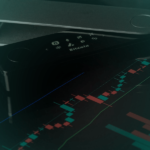Success in financial markets cannot depend on the simplistic understanding of price movements or some simple technical indicators, but rather, advanced traders integrate complex strategies that include a mix of technical analysis, economic factors, and well-developed risk management systems. Whether it be stocks, commodities, indices, or currencies, these markets require deeper insight and more refined techniques to stay ahead.
We are going to see the advanced strategies which can be applied in the different markets to make it a more sophisticated way of trading and thus improve the chance of long-term profitability.

Advanced Technical Analysis for Stocks:
Technical analysis is one of the major tools for an advanced trader. For a stock, technical analysis in stock trading helps a trader make proper entry and exit points based on the past price movement and the established patterns.
Price Action Trading
Price action trading is one of the most popular approaches among advanced stock traders who prefer to trade without traditional indicators such as moving averages or oscillators. Instead, the price action trader looks to analyze the movement of the stock’s price to identify patterns, key support and resistance levels, and other signs that might indicate potential breakout or breakdown points.
Examples are candlestick formations, such as Doji and Engulfing, and trendlines that may provide important clues on market sentiment. A high volume penetration of a resistance level may indicate a strong upward move.
Volume Analysis
Volume analysis is for any advanced trader, the necessary component. Using price action can be combined with volume to give an indication of confirmation trends for a better view of the market’s movement. For instance, a breakout accompanied by higher-than-usual volume usually means stronger momentum, hence a more reliable signal for a trade.
Such spikes in volume tend to occur at times of major news announcements or earnings reports, so monitoring these events and their impact on volume is a potentially very effective approach.
Trading Commodities with Fundamental and Technical Analysis
Commodity markets, such as oil, gold, and agricultural products, are driven by various global factors including geopolitical events, weather patterns, and economic reports. To the advanced commodity trader, a mixture of both fundamental and technical analysis is required to correctly predict the direction of prices.
The Supply and Demand
At the heart of commodity trading is the law of supply and demand. If a leading oil-exporting nation experiences political turmoil, for example, this can lead to a spike in the price of oil because of expected supply disruptions. Knowing these underlying drivers can enable traders to foresee changes in the prices of commodities before they actually occur.
For instance, traders will follow the weather for agricultural commodities. A drought in an important growing region may diminish supplies of wheat or corn, which creates demand-pull, driving up prices.
Seasonality in Commodities
Some commodities tend to have seasonal tendencies to plant and harvest cycles or weather. For example, natural gas generally has higher demand in colder months, while agricultural commodities such as corn and soybeans have price fluctuations based on their planting and harvest seasons. More sophisticated commodity traders will seek to trade off these tendencies, using technical analysis to pinpoint the optimal entry and exit levels.
Understanding Indices and Market Sentiment
Indices, such as the S&P 500, Nasdaq, and Dow Jones, represent a broad market average. Sophisticated traders will look at the indices to determine general market sentiment and seek to exploit the overall market rather than a stock’s price movement.
Sector Rotation
Sector rotation is a strategy employed by sophisticated traders to profit from market cycles. Various sectors are the stars of each phase of the business cycle. For instance, during an economic boom, the technology and consumer discretionary stocks are on top, but in times of contraction, the utilities and healthcare sectors are usually the best performers.
By taking the broader economic conditions and sector-specific factors into account, traders can rotate into the outperforming sectors and actively avoid underperforming sectors.

Using Correlations Between Indices
Many times, indices run in correlation with one another. For example, the S&P 500 and Nasdaq tend to move very similarly because both the indices are heavy-weighted in tech stocks. Knowing these correlations gives the advanced trader an idea of creating a strategy off of index movements and taking advantage of the overall market sentiment.
This may mean looking for specific technology stocks that could catch up with the broader market when, for instance, the S&P 500 is showing strength but the Nasdaq is lagging.
Advanced Currency Trading
Forex is a high-liquidity market where different pairs of currencies are traded. Currency traders can take advantage of the fluctuations in the value of one currency against another, and some advanced strategies go beyond simple pair trading into hedging, carry trades, and news-based trading.
Carry Trades
A trader performs carry trading in various ways, involving borrowing a low interest yielding currency while reinvesting it at one which possesses comparatively a superior interest rate with differential collection at expiry or lapse, but some commonly tried mode follows: One well-known example for such trading consists of Japanese Yen borrowings matched against the AUD which most normally ensures higher returns thanks to the more considerable rate at which its securities pay out and in between receive additional profits.
However, carry trades require immense risk management, since market positions could easily change course at the least expected moment. Moreover, geopolitical factors and central bank policies should be closely monitored, as they might influence interest rate decisions and attractiveness for some currencies.
Event-Driven Trading
Among other factors, economic events such as the announcements of central banks, inflation reports, and employment data may drastically move the forex market. More advanced currency traders would exploit such movements using event-driven strategies.
For instance, if the Federal Reserve has unexpectedly increased interest rates, then the dollar may appreciate against other currencies. Traders trade around events with a view to possible market reactions. The main drivers of profits in event-driven strategies require perfect timing. Thus, by combining fundamental analysis with short-term technical signals, the trader can make swift decisions yet well-informed ones.
Risk Management and Integration with Advanced Strategies
While advanced trading strategies can offer high returns, they also come with significant risk. That is why risk management becomes important. A key aspect of any advanced trading strategy is to make sure that risk is properly controlled through position sizing, stop-loss orders, and portfolio diversification.
Position Sizing
It means the size of capital at risk in any single trade. Advanced traders take a cautious approach and decide the position size based on the trading account and risk level for each and every trade. Most have a standard fixed percentage of the total capital allocated for a given trade, between 1% to 2% of it so that one big loss does not threaten the whole portfolio.
Stop-Loss and Take-Profit Levels
Every risk management plan involves setting stop-loss orders to cap the losses and take-profit orders to lock in profits. Advanced traders set dynamic stop-loss orders that move along with the trade when it is in their favor. They may also use multiple combinations of various exit strategies which could be either purely technical exit levels or broader market analysis for exiting a trade.
Conclusion:
Advanced trading strategies are designed to arm the trader with a full artillery to effectively tackle stocks, commodities, indices, and currencies. By using a mix of technical analysis, fundamental factors, and good risk management, a well-seasoned trader can survive such choppy markets.
Whether one is a stock trader with price action, a commodities trader taking advantage of supply and demand, or even a forex trader performing carry trades, deep knowledge of markets, and events happening around the globe, and constant honing of such advanced strategies can be rather important for profitable returns. Advanced strategies will also help the trader enhance his capability for profit making and reduction of risks as a road to long-term success through their disciplined implementation.



